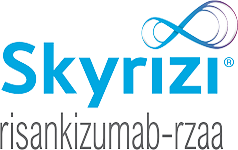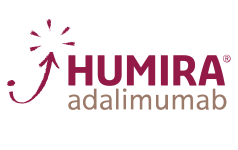For adult patients with moderate to severe ulcerative colitis (UC)
Remission and response in 2 pivotal UC trials1-3,*,†
*Clinical remission was defined as a total Mayo score of ≤2 with no subscore >1.1,2
†Clinical response is defined as a decrease in total Mayo score of ≥3 points from baseline and a decrease in total Mayo score of ≥30% from baseline and a decrease in the rectal bleeding score of ≥1 or an absolute rectal bleeding subscore of 0 or 1.2
ULTRA I
Remission for Total Population at Week 8 (Primary Endpoint)1,2
ULTRA II
Remission for Total Population at Week 8 (Primary Endpoint)1,3
ULTRA I Study Design Intro: 8-week, randomized, double-blind, placebo-controlled study in 390 anti-TNF-naïve adult patients with inadequate response to concurrent or prior immunosuppressant therapy and evaluated 3 treatment arms. Primary endpoint: percentage of patients achieving clinical remission at Week 8.1,2
ULTRA II Study Design Intro: 52-week, randomized, double-blind, placebo-controlled study in 518* adult patients with inadequate response to concurrent or prior immunosuppressant therapy, as well as patients who lost response or were intolerant to anti-TNF agents.† Two treatment arms were evaluated (± concomitant therapy). Co-primary endpoints: percentage of patients achieving clinical remission at Weeks 8 and 52.1,3
*24 patients were not included in the efficacy analysis due to site noncompliance.
†Patients with prior exposure to HUMIRA were excluded from the study.
TNF=tumor necrosis factor
Remission*: total population at Week 81
ULTRA I: Bio-naïve patients
18.5%
HUMIRA 160 mg/80 mg/40 mg (n=130)
VS
9.2%
P<0.05
Control (n=130)
ULTRA II: Bio-naïve and
Bio-experienced patients
16.5%
HUMIRA 160 mg/80 mg/40 mg (n=248)
VS
9.3%
P<0.05
Control (n=246)
*Clinical remission was defined as a total Mayo score of ≤2 with no subscore >1.
EOW=every other week; TNF=tumor necrosis factor
Remission*: total population and subgroup analysis at Week 523
ULTRA II: Bio-naive and Bio-experienced patients
- HUMIRA 160 mg/80 mg/40 mg EOW
- Control
Intention-to-treat (ITT) study population using non-responder imputation.
Statistical Considerations
Subgroup analyses are not powered or tested to demonstrate a statistically significant difference in treatment effect; no statistical inferences can be made due to the exploratory nature of the analysis.
Subgroup Analysis Methodology: The subgroup analysis is of the intention-to-treat study population of patients treated with HUMIRA EOW or placebo who achieved clinical remission (total Mayo score of ≤2 with no subscore >1) at Week 52, stratified by previous anti-TNF experience. Patients with missing data were classified as not achieving clinical response† or clinical remission.
*Clinical remission was defined as a total Mayo score of ≤2 with no subscore >1.
†Clinical response is defined as a decrease in total Mayo score of ≥3 points from baseline and a decrease in total Mayo score of ≥30% from baseline and a decrease in the rectal bleeding score of ≥1 or an absolute rectal bleeding subscore of 0 or 1.3
EOW=every other week; TNF=tumor necrosis factor
Endoscopic improvement3
ULTRA II: Mucosal Healing* Data at Week 52
- HUMIRA 160 mg/80 mg/40 mg EOW
- Control
Statistical Considerations
Subgroup analyses are not powered or tested to demonstrate a statistically significant difference in treatment effect; no statistical inferences can be made due to the exploratory nature of the analysis.
Subgroup Analysis Methodology: The subgroup analysis is of the intention-to-treat study population of patients treated with HUMIRA EOW or placebo who achieved mucosal healing (endoscopy subscore of 0 or 1) at Week 52, stratified by previous anti-TNF experience. Patients with missing data were classified as not achieving clinical response† or clinical remission.‡
*Mucosal healing is defined as an endoscopy subscore of 0 or 1 and did not include a histological analysis.
†Clinical remission was defined as a total Mayo score of ≤2 with no subscore >1.
‡Clinical response is defined as a decrease in total Mayo score of ≥3 points from baseline and a decrease in total Mayo score of ≥30% from baseline and a decrease in the rectal bleeding score of ≥1 or an absolute rectal bleeding subscore of 0 or 1.
EOW=every other week; TNF=tumor necrosis factor
Corticosteroid-free remission* at Week 52 (prespecified secondary endpoint)3,†
ULTRA II: Patients were bio-naïve and bio-experienced
- HUMIRA 160 mg/80 mg/40 mg EOW (n=150)
- Control (n=140)
Intention-to-treat (ITT) study population using nonresponder imputation.
aP=0.035.
*Clinical remission was defined as a total Mayo score of ≤2 with no subscore >1.
†Restricted to patients using corticosteroids at baseline.
EOW=every other week
5-year safety data4
Adverse reaction rates observed in clinical trials and OLE studies may not predict the rates observed in a broader patient population in clinical practice.
Rates (events per 100 PYs) of treatment-emergent adverse events (AEs)* of interest in 3 controlled and uncontrolled moderate to severe adult UC studies for✝:
Risk of Serious Infection

Risk of Serious Infection1
Patients treated with HUMIRA are at increased risk for developing serious infections that may lead to hospitalization or death. Most patients who developed these infections were taking concomitant immunosuppressants such as methotrexate or corticosteroids.
Carefully consider the risks and benefits of treatment with HUMIRA prior to initiating therapy in patients with chronic or recurrent infection. Monitor patients closely for the development of signs and symptoms of infection during and after treatment with HUMIRA.
- Do not start HUMIRA in patients with an active infection, including localized infections.
- Patients older than 65 years, patients with co‑morbid conditions, and/or patients taking concomitant immunosuppressants may be at greater risk of infection.
The use of HUMIRA in UC beyond 1 year has not been evaluated in controlled clinical studies.
- OLE populations generally consist of treatment responders, as patients who are unable to tolerate the drug or who do not respond to the drug drop out.
aData as of December 31, 2014.
bThree pooled controlled and uncontrolled studies.
cControl=placebo ± concomitant therapy.
*Treatment-emergent AE is defined as any adverse event with an onset date on or after the first HUMIRA dose and up to 70 days after the last dose of HUMIRA.
†Excluding Japanese studies.
AE=adverse event; OLE=open-label extension; PYs=patient-years; TNF=tumor necrosis factor
Risk of Tuberculosis

Risk of Tuberculosis1
Patients treated with HUMIRA are at increased risk for developing serious infections that may lead to hospitalization or death, including active tuberculosis (TB), including reactivation of latent TB. Patients with TB have frequently presented with disseminated or extrapulmonary disease.
- Test patients for latent TB before HUMIRA use and during therapy. Initiate treatment for latent TB prior to HUMIRA use.
- Monitor patients closely for the development of signs and symptoms of infection during and after treatment with HUMIRA, including the development of TB in patients who tested negative for latent TB infection prior to initiating therapy.
The use of HUMIRA in UC beyond 1 year has not been evaluated in controlled clinical studies.
- OLE populations generally consist of treatment responders, as patients who are unable to tolerate the drug or who do not respond to the drug drop out.
aData as of December 31, 2014.
bThree pooled controlled and uncontrolled studies.
cControl=placebo ± concomitant therapy.
*Treatment-emergent AE is defined as any adverse event with an onset date on or after the first HUMIRA dose and up to 70 days after the last dose of HUMIRA.
†Excluding Japanese studies.
AE=adverse event; OLE=open-label extension; PYs=patient-years; TNF=tumor necrosis factor
Risk of Malignancya

Risk of Malignancy1
Lymphoma, including a rare type of T-cell lymphoma, and other malignancies, some fatal, have been reported in patients treated with TNF blockers, including HUMIRA.
- Carefully consider the risks and benefits of treatment with HUMIRA prior to initiating therapy in patients with a known malignancy.
- More cases of malignancies were observed among HUMIRA-treated patients compared to control patients in clinical trials.
Risk of HSTCL1
Postmarketing cases of hepatosplenic T-cell lymphoma (HSTCL), a rare type of fatal lymphoma, have been reported in patients treated with TNF blockers including HUMIRA. The majority of cases were in adolescent and young adult males with inflammatory bowel disease who had received concomitant or prior treatment with azathioprine or 6‑mercaptopurine.
The use of HUMIRA in UC beyond 1 year has not been evaluated in controlled clinical studies.
- OLE populations generally consist of treatment responders, as patients who are unable to tolerate the drug or who do not respond to the drug drop out.
aExcluding non-melanoma skin cancer and lymphoma.
bData as of December 31, 2014.
cThree pooled controlled and uncontrolled studies.
dControl=placebo ± concomitant therapy.
*Treatment-emergent AE is defined as any adverse event with an onset date on or after the first HUMIRA dose and up to 70 days after the last dose of HUMIRA.
†Excluding Japanese studies.
AE=adverse event; OLE=open-label extension; PYs=patient-years; TNF=tumor necrosis factor
Risk of Lymphoma

Risk of Lymphoma1
Lymphoma and other malignancies, some fatal, have been reported in children and adolescent patients treated with TNF blockers, of which HUMIRA is a member.
Postmarketing cases of hepatosplenic T-cell lymphoma (HSTCL), a rare type of T-cell lymphoma, have occurred in adolescent and young adults with inflammatory bowel disease treated with TNF blockers including HUMIRA.
The rate of lymphoma in controlled and uncontrolled clinical trials of HUMIRA was approximately 3-fold higher than expected in the general population.
Patients with chronic inflammatory diseases, particularly those with highly active disease, are at a higher risk for the development of lymphoma.
The use of HUMIRA in UC beyond 1 year has not been evaluated in controlled clinical studies.
- OLE populations generally consist of treatment responders, as patients who are unable to tolerate the drug or who do not respond to the drug drop out.
Study Design Intro: 52-week, randomized, double-blind, placebo-controlled study in 518* adult patients with inadequate response to concurrent or prior immunosuppressant therapy, as well as patients who lost response or were intolerant to anti-TNF agents.† Two treatment arms were evaluated (± concomitant therapy). Co‑Primary Endpoints: percentage of patients achieving clinical remission‡ at Week 8 and at Week 52.1,3
aData as of December 31, 2014.
bThree pooled controlled and uncontrolled studies.
cControl=placebo ± concomitant therapy.
*Treatment-emergent AE is defined as any adverse event with an onset date on or after the first HUMIRA dose and up to 70 days after the last dose of HUMIRA.
†Excluding Japanese studies.
AE=adverse event; OLE=open-label extension; PYs=patient-years; TNF=tumor necrosis factor
Legacy registry
Ongoing, multinational UC registry to assess the long-term safety of HUMIRA in routine clinical practice6
No New Safety Signals
requiring label updates were identified6
10-year
multinational UC registry6
1984 UC Patients and 2707.77 PYs
of exposure to HUMIRA6
Registry Treatment-Emergent Adverse Events (AEs)7
Safety Considerations
Serious Infections1
Patients treated with HUMIRA are at increased risk for developing serious infections that may lead to hospitalization or death. These infections include active tuberculosis (TB), reactivation of latent TB, invasive fungal infections, and bacterial, viral, and other infections due to opportunistic pathogens. Most patients who developed these infections were taking concomitant immunosuppressants such as methotrexate or corticosteroids.
Malignancies1
Lymphoma, including a rare type of T-cell lymphoma, and other malignancies, some fatal, have been reported in patients treated with TNF blockers, including HUMIRA.
Other Serious Adverse Reactions1
Patients treated with HUMIRA also may be at risk for other serious adverse reactions, including anaphylaxis, hepatitis B virus reactivation, demyelinating disease, cytopenias, pancytopenia, heart failure, and a lupus-like syndrome.
Risk of HSTCL1
Postmarketing cases of hepatosplenic T‑cell lymphoma (HSTCL), a rare type of fatal lymphoma, have been reported in patients treated with TNF blockers, including HUMIRA. The majority of cases were in adolescent and young adult males with inflammatory bowel disease who had received concomitant or prior treatment with azathioprine or 6‑mercaptopurine.
HUMIRA Registry Group adverse events (AEs) (events per 100 patient-years)7
| Without IMM n=1663 2160.87 PYs |
With IMM n=464 546.90 PYs |
Overall HUMIRA n=1984 2707.77 PYs |
Overall IMM n=2219 3364.54 PYs |
|
| Any AE | 19.2 | 25.4 | 20.5 | 14.4 |
| Serious AE | 8.6 | 9.0 | 8.6 | 5.8 |
| AE leading to registry discontinuation | 0.6 | 0.9 | 0.7 | 0.3 |
| Infection | 4.1 | 5.9 | 4.4 | 3.0 |
| Serious infection | 1.6 | 1.8 | 1.6 | 0.9 |
| Opportunistic infection (excl. oral candidiasis and tuberculosis) | <0.1 | 0 | <0.1 | 0 |
| Tuberculosis | <0.1 | 0.2 | <0.1 | <0.1 |
| Active | <0.1 | 0 | <0.1 | <0.1 |
| Latent | 0 | 0.2 | <0.1 | <0.1 |
| Any malignancy | 0.5 | 0.7 | 0.6 | 1.0 |
| Lymphoma | <0.1 | 0 | <0.1 | <0.1 |
| Non-melanoma skin cancer | 0.1 | 0.7 | 0.3 | 0.4 |
| AE leading to death | 0.2 | 0.4 | 0.2 | 0.1 |
Data Limitations
- Observational data are subject to outcome-reporting bias and the bias related to rules attributing safety events to HUMIRA despite exposure to other therapies and results should be cautiously interpreted
Uncontrolled, observational, post-marketing registry7
- Providing real-world data by assessing long-term safety and effectiveness of HUMIRA in routine clinical practice
- 4245 patients enrolled as of May 31, 2017
- Interim safety data are through the data cut-off date of May 31, 2017
Treatment-emergent AEs occurring from the first day in the registry up to 70 days after the last dose in the registry or up to the cut-off date are reported for all patients who received ≥1 registry dose of HUMIRA with or without concurrent immunomodulators (IMM) therapy.7
Enrollment will continue until the enrollment target of 8250 patients is reached.7
Study Design Intro: LEGACY is an ongoing, post‑marketing, 10-year, non-interventional, multinational registry assessing the long-term safety of HUMIRA or IMM as used in routine clinical practice in adults with moderately to severely active UC. All patients were dosed per their local label.7
IMM=immunomodulators; PYs=patient-years



